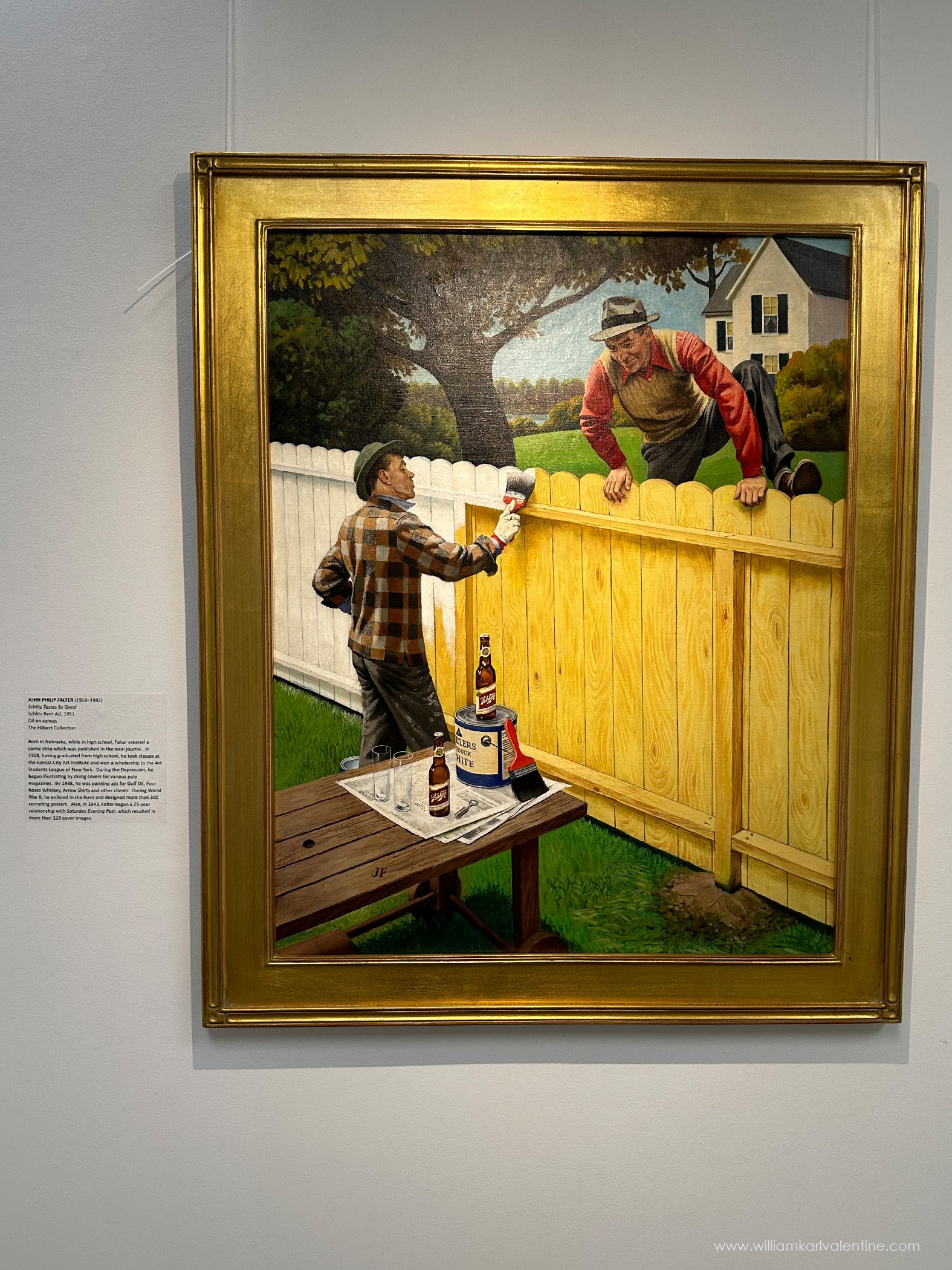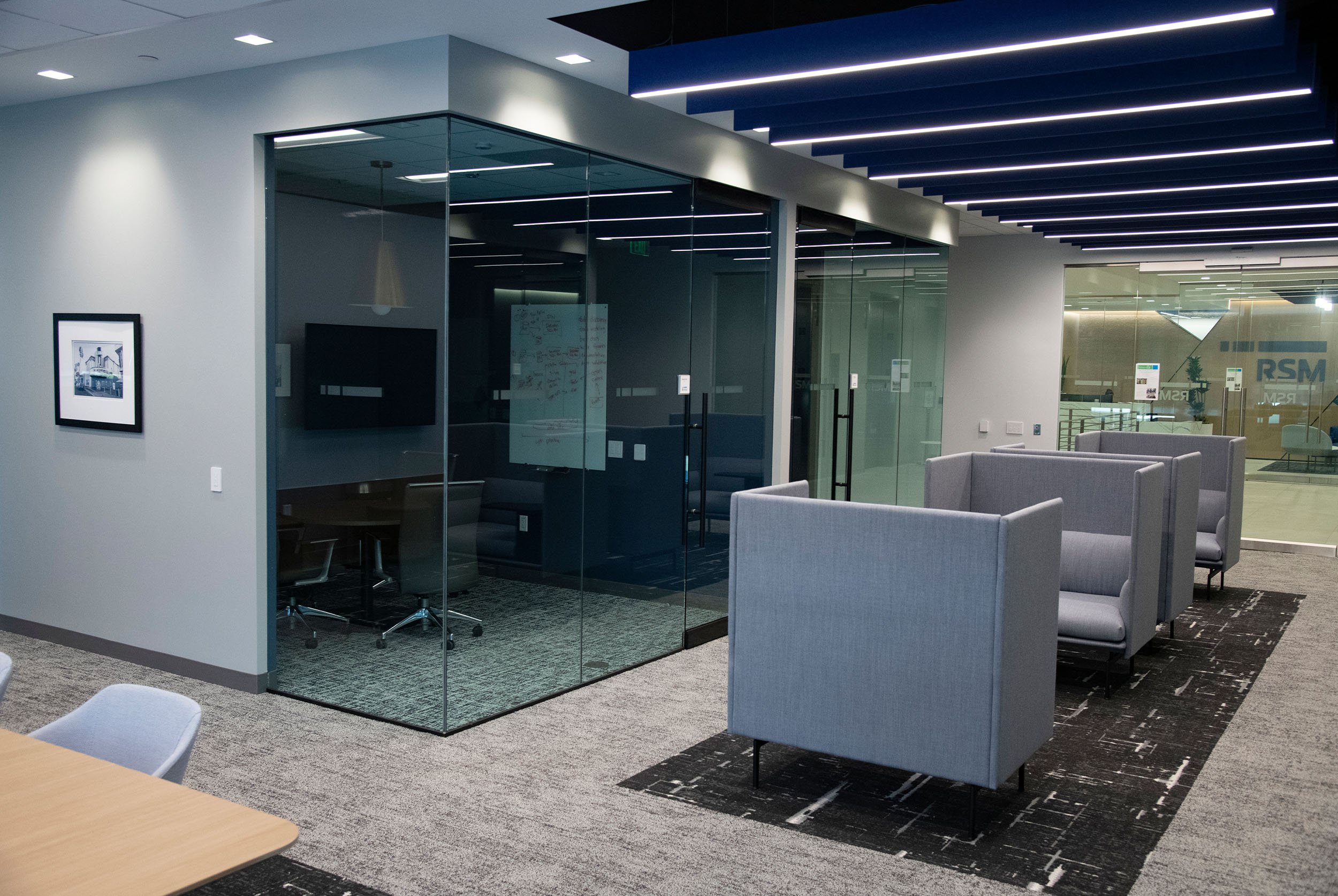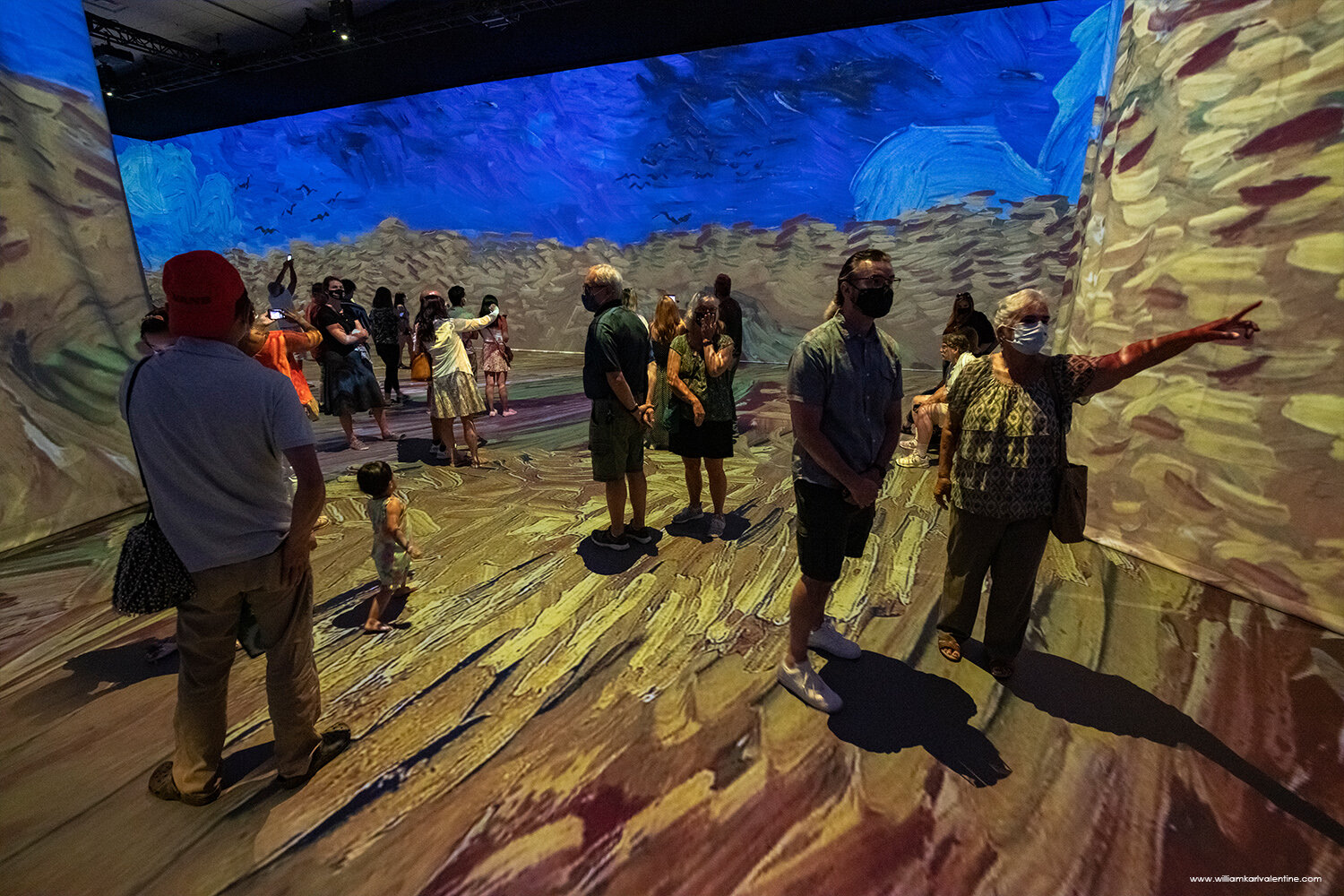I had a chance last week to catch up with Mark Hilbert, who with his wife Janet, founded The Hilbert Museum of California Art at Chapman University in Orange, California. The Musem houses their collection of 1,000 20th century paintings documenting California and one of my first blog posts documented a private reception I went to when it opened in 2016. The original space, at 7,000 square feet, was beautiful and it is currently being expanded to 22,000 square feet due to open early next year. The Hilbert collection includes works by Maynard Dixon and many of my favorite California Painters. They opened the Hilbert Temporary gallery off The Circle in Orange to stay engaged with the public as they prepared for the unveiling of their beautiful new museum space.
Mark Hilbert explaining the expansion of his museum which will be completed early in 2024.
The temporary gallery space is obviously only a fraction of the size of the coming new museum, but the space is still decent and located right off the Circle in Orange. The area has great restaurants, eclectic shopping, and is a great place to spend a few hours on a weekend. I’m hopeful that someone maintains this space as a gallery after the new Hilbert Museum opens. I also encourage everyone to visit the Hilbert Temporary while it is up because the works on display are worth the trip to see them.
My Favorite Painting in the Exhibition
Dean Cornwell (1892-1960) “Mission San Antonio de Padua - 1949 Oil on Board
I have heard many photography scholars talk about how a viewer’s past experiences influence how they perceive a photograph. People will connect, or not connect, with a photograph often because of their past experiences, their understanding of the subject matter, or even their believes. Every viewer’s experience is unique, so their response is also unique and that is a good thing. Every person’s opinion has value, even if only just to that person. In talking with Mark he expressed frustration with political viewpoints impacting viewing experiences and an increasing lack of tolerance for differing opinions, I completely agree with him. As in the world, the art world also needs to be inclusive to differing points of view, including conservative ones. The First Amendment is important for all of us.
Dean Cornwell’s 1949 painting Mission San Antonio de Padua really stood out to me and I think may be of value to my blog post readers to explain why so I can expand upon what I wrote above about a viewer’s past experience influencing their reaction to an image.
I have written blog posts before about the Father Serra statue that was in downtown Los Angeles. For me it was an important monument because both Robert Frank and Garry Winogrand had photographed in the 1950’s. I searched for the statue and photographed it on May 29th, 1995, and returned again 25 years later to the day and rephotographed it. Two weeks after photographing the Father Serra statue a second time Indigenous activists invited Los Angeles Times reporters to the statue to witness them tear it down as part of the George Floyd protests. I don’t get how it was connected other than tolerance was being shown to civil unrest at the time.
I am respectful of the opinions that Indigenous Americans have towards colonization and the influence that Catholicism had upon their culture, they have a right to be upset with injustices of the past. But that shouldn’t give them the right to destroy public property or cancel things they don’t believe in. We need to remember history, not erase it. Cancel culture is a slippery slope and should never be tolerated. For me when they tore down the Father Serra statue for that minor LA Times article, they took away my connection to two of my favorite photographers, they destroyed an artifact of California history. They did it all for a soon forgotten moment of attention that was quickly overshadowed by so many other events with the pandemic. Having that experience impacted my thoughts when viewing this painting. I was drawn to the graphic shape of the cross and the stylization of the people in the painting. I took note how the priests were supervising (ordering) the indigenous people doing all the labor to accomplish their task. I also noticed how the indigenous people were colorful and bright and the priests were ashen and less dynamic. I saw elements in this painting supporting the outrage of the indigenous people who tore down my Father Serra statue. For someone of strong Catholic Faith they might see the impact the church had bringing the ministry to the new world. Both viewpoints are valid. No matter what opinion a viewer has the painting is an amazing piece of artwork, wonderfully crafted, and is something to be enjoyed by all. Hopefully it will inspire various dialogues for years to come.
Father Serra Statue two weeks before being torn down by indigenous protestors in 2020 - William Karl Valentine











































































































